Home » Team
Category Archives: Team
Field work in the Eocene Prebetic II
The rain in Spain…
Well the second field work campaign in the Eocene Prebetic was conditional by the bad weather, rain, wind, snow and cold.
The picture shows the members of the team imply in this field try to the Eocene rocks within the provinces of Alicante and Murcia.
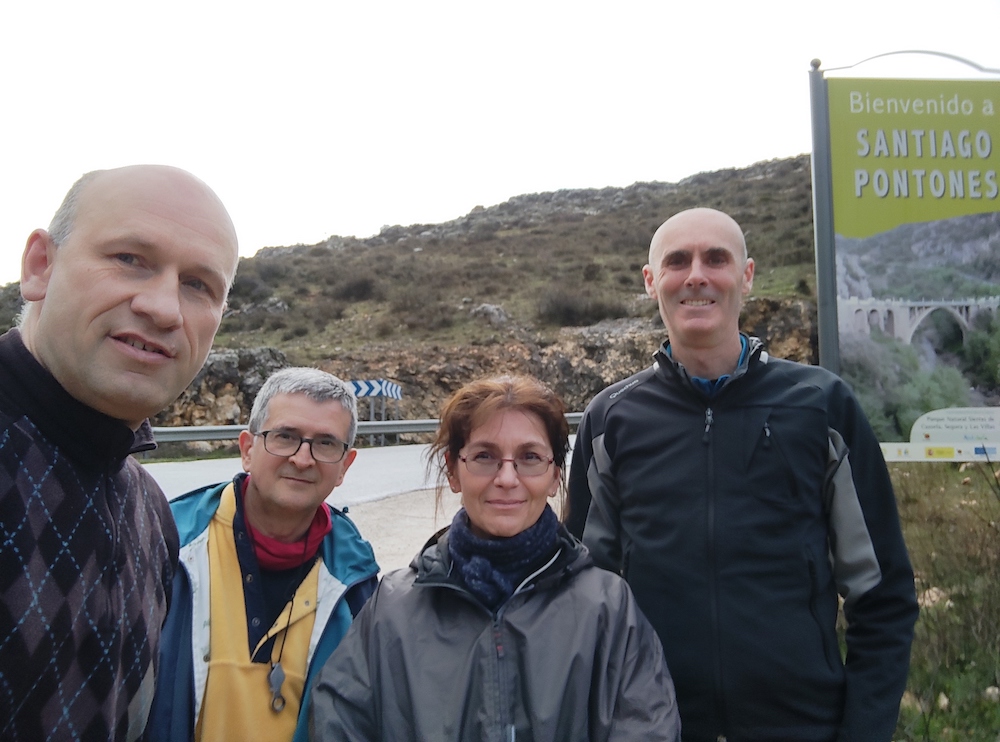
This is the second field season of the project of the Spanish research agency (Agencia Estatal de Investigación) of the Spanish Science and innovation minister (Ministerio de Ciencia e Innovación) entitle as “EVOLUCION TECTONO-DEPOSICIONAL DE CUENCAS SEDIMENTARIAS CENOZOICAS: CARACTERIZACION 2D-3D Y MEJORA DE PATRONES ESTANDAR” (PID2020-114381GB-I00). See previous post.
Field work in the Eocene Prebetic
The good weather in Alicante during the winter season has permitted to do the first field season of our project of the Spanish research agency (Agencia Estatal de Investigación) of the Spanish Science and innovation minister (Ministerio de Ciencia e Innovación) entitle as “EVOLUCION TECTONO-DEPOSICIONAL DE CUENCAS SEDIMENTARIAS CENOZOICAS: CARACTERIZACION 2D-3D Y MEJORA DE PATRONES ESTANDAR” (PID2020-114381GB-I00). See previous post.
The picture shows the members of the team imply in this field try to the Eocene rocks within the provinces of Alicante and Murcia.
Crina Miclaus (Alexandru Ioan Cuza University)
Josep Tosquella (Huelva University)
Manuel Martin-Martin (Alicante University)
Jose Enrique Tent-Manclus (Alicante University)
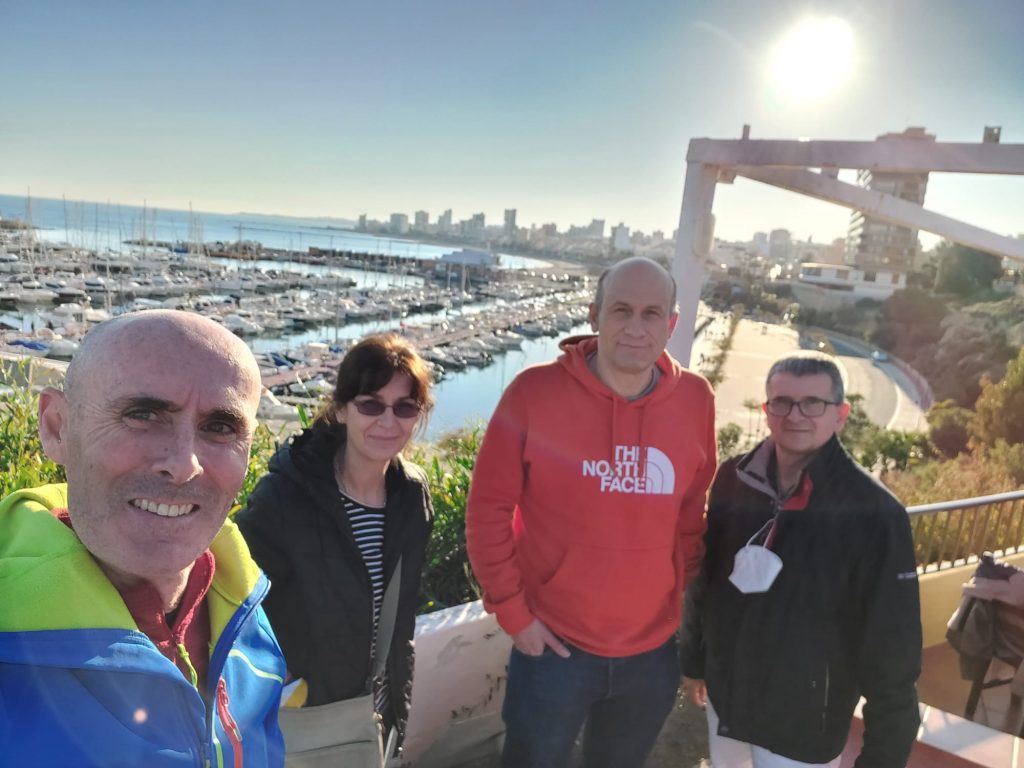
Next picture shows a nummulite-rich limestone in a quarry near Onil, one of the visited sections in our field work.
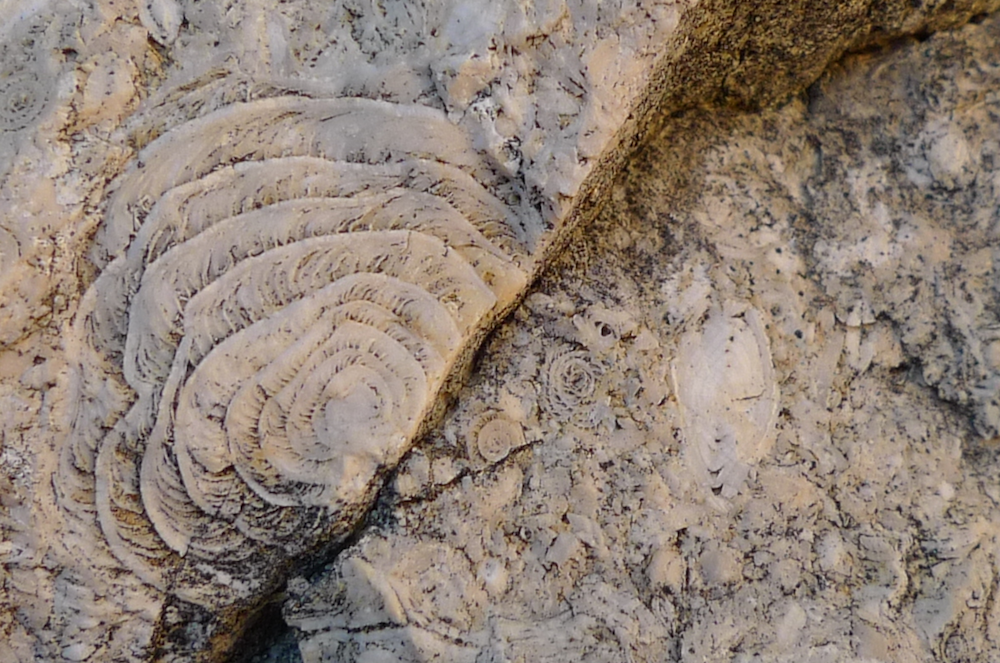
New project to study sedimentary basins.
The Spanish research agency (Agencia Estatal de Investigación) of the Spanish Science and innovation minister (Ministerio de Ciencia e Innovación) has conceded a new project to study the Cenozoic sedimentary basins entitle as “EVOLUCION TECTONO-DEPOSICIONAL DE CUENCAS SEDIMENTARIAS CENOZOICAS: CARACTERIZACION 2D-3D Y MEJORA DE PATRONES ESTANDAR” (PID2020-114381GB-I00).
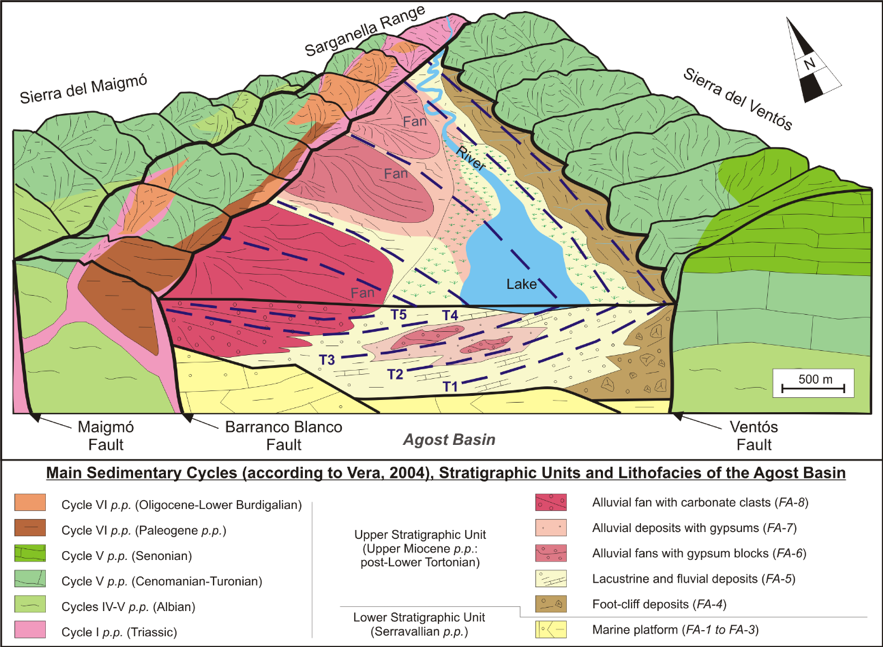
This research project will develop techniques for the analysis of various types of Cenozoic sedimentary basins in a general compressive or convergent framework (associated with strike-slip faults, transported -piggy-back or wedge-top-, and complex foreland systems). The stratigraphic architecture, biostratigraphic control of the different sedimentary bodies, stratigraphic discontinuities will be studied, as well as sediments sources (both terrigeneous and biogenic) through mineralogical, petrographic and geochemical studies.
TEAM
Principal investigator: Manuel Martín-Martín (Alicante University)
Jesús M. Soria (Alicante University)
Manuel Bullejos Lorenzo (Granada University)
Antonio Sánchez Navas (Granada University)
Agustín Martín-Algarra (Granada University)
José Enrique Tent-Manclús (Alicante University)
Josep Tosquella (Huelva University)
Carlos Ureña Almagro (Granada University)
Fernando Pérez-Valera (Alicante University)
Francisco Javier Alcalá-García (Instituto Geológico y Minero de España, IGME)
Estelle Mortimer (University of Leeds)
Douglas Patton (University of Leeds)
Francesco Perri (Calabria University)
Salvatore Critelli (Calabria University)
Crina Miclaus (Alexandru Ioan Cuza University)
Francisco Serrano (Malaga University)
The Huelva Group: Josep Tosquella

Josep Tosquella Angrill graduated in Geological Sciences in 1985 from the University of Barcelona. He obtained his doctorate from the University of Barcelona in 1995, having studied the Nummulitinae of the Paleocene-Early Eocene of the south-Pyrenean Basin. Their teaching history begins at the Faculty of Geology of the University of Barcelona as Assistant Professor LRU (1990-1998). From 1999 to 2001 teach as a Full-time Associate Professor in the Department of Geology of the Faculty of Experimental Sciences of the University of Huelva, and on October 17 of 2001 he take part as Full University Professor at this University at the Department of Earth Sciences (Palaeontology area). His recent research activity is mainly focused on the following lines: a) Large Benthic Foraminifera (Nummulitids) in the Cenozoic sediments of the Pyrenean, Betic and Vasco-Cantabrian areas: Systematics, Paleoecology, Paleobiogeography, Biochronostratigraphy and usefulness in Intercontinental Stratigraphic Correlations, and b) Geoarchaeology of the Tinto-Odiel Estuary (Huelva, SW Spain): Morphosedimentary evolution and peopling.
Recent papers:
- Martín-Martín, M., Guerrera, F., Tosquella, J., Tramontana, M., Paleocene-Lower Eocene carbonate platforms of westernmost Tethys. Sedimentary Geology, 404, 105674.
- Ruiz, F., Rodríguez-Vidal, J.,Cáceres, L.M.,Olías, M., González-Regalado, M.L., Campos, J.M., Bermejo, J., Abad, M., Izquierdo, T.,Carretero, M.I.,Pozo, M.,Monge, P.,Tosquella, J., Prudencio, M.I., Dias, M.I.,Marques, R., Gómez, P., Toscano, Romero, V., 2020. Silver and copper as pollution tracers in Neogene to Holocene estuarine sediments from southwestern Spain. Marine Pollution Bulletin, 150, 110704.
- Ruiz, F., Gómez, G., González-Regalado, M.L., Rodríguez-Vidal, J.,Cáceres, L.M.,Gómez, P., Clemente, M.J., Bermejo, J., Campos, J., Toscano, A., Abad, M., Izquierdo, T., Muñoz, J.M., Carretero, M.I.,Prudencio, M.I.,Dias, M.I.,Marques, R.,Tosquella, J., Monge, P., 2020. A multidisciplinary analysis of shell deposits from Saltés Island (SW Spain): The origin of a new Roman shell midden. Palaeogeography, Palaeoclimatology, Palaeoecology, 538, 109416.
- González-Regalado, M.L., Romero, V., Abad, M., Tosquella, J., Izquierdo, T., Gómez, P., Clemente, M.J., Toscano, A., Rodríguez-Vidal, J., Cáceres, L.M., Muñoz, J.M., Prudêncio, M.I., Dias, M.I., Marques, R., García, E.X.M., Carretero, M.I., Ruiz, F., Monge, G., 2019. Late Tortonian-Middle Messinian palaeoenvironmental changes in the western Betic Strait (SW Spain). Ameghiniana, 56 (4), 336-360.
- Astibia, H., Payros, A., Ortiz, S., Elorza, J., Álvarez-Pérez, G., Badiola, A., Bardet, N., Berreteaga, A., Calzada, S., Corral, J.C., Díaz-Martínez, I., Merle, D., Pacaud, J.M., Pereda-Suberbiola, X., Pisera, A., Rodríguez-Tovar, F., Tosquella, J., Bitner, M.A., 2016. Fossil associations from the middle and upper Eocene strata of the Pamplona Basin and surrounding areas (Navarre, western Pyrenees). Journal of Iberian Geology, 42 (1), 7-28.
- Payros, A., Pujalte, V., Orue-Etxebarria, X., Apellaniz, E., Bernaola, G., Baceta, J.I., Caballero, F., Dinarès-Turell, J., Monechi, S., Ortiz, S., Schmitz, B. y Tosquella, J., The relevance of iberian sedimentary successions for paleogene stratigraphy and timescales. In Montenari, M. (Ed.): Stratigraphy & Timescales (Vol. I): 393-466, Academic Press publications, ELSEVIER, Amsterdam.
- Molina, E., Alegret, L., Apellaniz, E., Bernaola, G., Caballero, F., Dinarès-Turell, J., Hardenbol, J., Heilmann-Clausen, C., Larrasoaña, J.C., Luterbacher, H.P., Monechi, S., Ortiz, S., Orue-Etxebarria, X., Payros, A., Pujalte, V., Rodríguez-Tovar, F., Tosquella, J. y Uchman, A., 2011. The Global Stratotype Section and Point (GSSP) for the base of the Lutetian Stage at the Gorrondatxe section, Spain. Episodes, 34 (2), 86-108.
- Payros, A., Dinarès-Turell, J., Bernaola, G., Orue-Etxebarria, X., Apellaniz, E. y Tosquella, J., 2011. On the age of the Early/Middle Eocene boundary and other related events: cyclostratigraphic refinements from the Pyrenean Otsakar section and the Lutetian GSSP. Geological Magazine, 148 (3), 442-460.
- Astibia, H., Bardet, N., Pereda-Suberbiola, X., Payros, A., Buffrénil, V. de, Elorza, J., Tosquella, J., Berreteaga, A. y Badiola, A., 2010. New fossils of Sirenia from the Middle Eocene of Navarre (Western Pyrenees): the oldest West European sea cow record. Geological Magazine, 147 (5), 665-673.
- Payros, A., Pujalte, V., Tosquella, J. y Orue-Etxebarria, X., 2010. The Eocene storm-dominated foralgal ramp of the western Pyrenees (Urbasa-Andia Formation): an analogue of future shallow-marine carbonate systems?Sedimentary Geology, 228 (3-4), 184-204.

The Granada Group: Antonio Sánchez-Navas
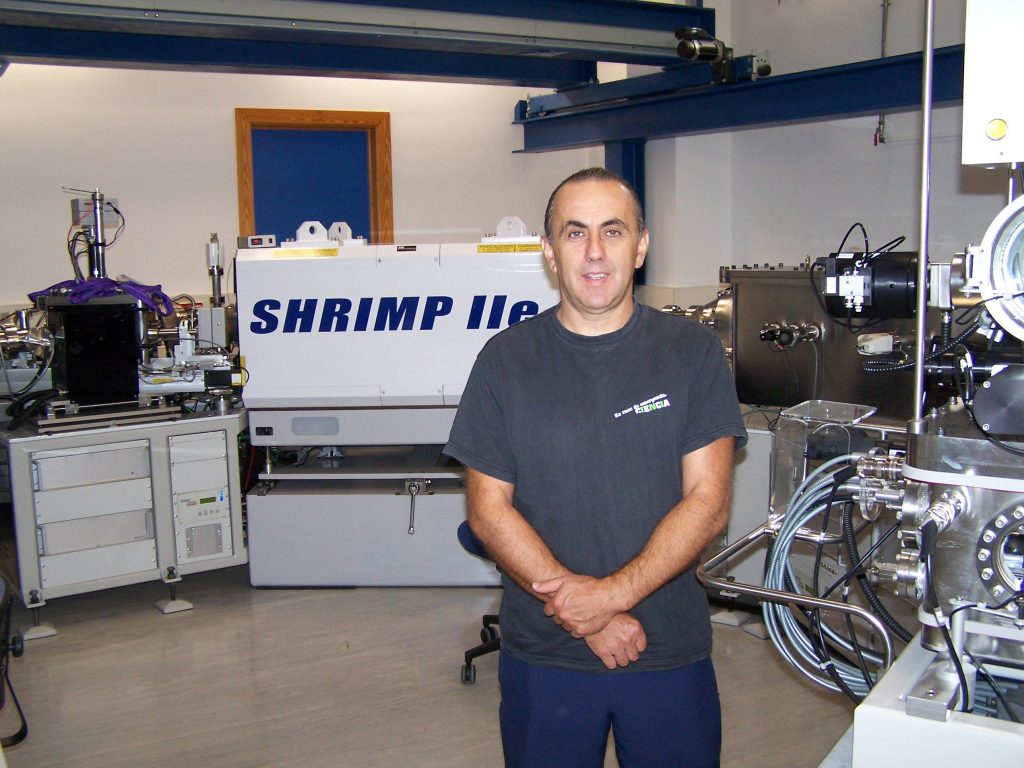
Antonio Sánchez-Navas has been doing research in the fields of crystallography, mineralogy and petrology. The publication list of mineralogy includes papers in American Mineralogist, European Journal of Mineralogy, Canadian Mineralogist y Clays and Clay minerals. His research activities focussed on the field of crystallography have been published in Crystal Growth and Design and Journal of Crystal Growth. Publications about geochemistry include papers in important international journals as Geochimica et Cosmochimica y Chemical Geology; about Geology, in journals as Geology, Journal of Geology, Journal of Metamorphic Geology and Terranova; about sedimentology in Sedimentology; about environmental sciences and cultural heritage in Journal of Geophysical Research, Atmospheric Environment, Geoderma, Archaeometry and Journal of Cultural Heritage. He has worked as scientific and technical advisor of the Scientific Instrumentation Center of the University of Granada (1989-present). Among the works carried out, it is worth mentioning the development of the backscattered electron diffraction (EBSD) for the textural analysis of geological materials in our laboratories.
– López-Quirós, A., Sánchez-Navas, A., Nieto, F., Escutia C. (2020): New insights into the nature of glauconite. American Mineralogist, 105, 674-686. https://doi.org/10.2138/am-2020-7341.
– Chen, X. Y., Teng, F. Z., Sanchez, W. R., Romanek, C. S., Sanchez-Navas, A., Sánchez-Román, M.(2020): Experimental constraints on magnesium isotope fractionation during abiogenic calcite precipitation at room temperature. Geochimica et Cosmochimica Acta, 281, 102-117. https://doi.org/10.1016/j.gca.2020.04.033.
– López-Quirós, A., Escutia, C., Sánchez-Navas, A., Nieto, F., Garcia-Casco, A., Martín-Algarra, A., Evangelinos, D., Salabarna, A. (2019) Glaucony authigenesis, maturity and alteration in the Weddell Sea: An indicator of paleoenvironmental conditions before the onset of Antarctic glaciation. Scientific Reports 9:13580. https://doi.org/10.1038/s41598-019-50107-1.
– Hernández-Laguna, A., Pérez del Valle, C., Hernández-Haro, N., Ortega-Castro, J., Muñoz-Santiburcio, D., Vidal, I., Sánchez-Navas, A., Escamilla-Roa, E., Sainz-Díaz, C. I. (2019): Compressibility of 2M1 muscovite-phlogopite series minerals. Journal of Molecular Modeling 25:341. https://doi.org/10.1007/s00894-019-4218-x.
– Farré-de-Pablo, J., Proenza, J. A., González-Jiménez, J. M., Garcia-Casco, A., Colás, V., Roqué-Rossell, J., Camprubí, A., Sánchez-Navas, A. (2018): A shallow origin for diamonds in ophiolitic chromitites. Geology, 47 (1), 75-78. https://doi.org/10.1130/G45640.1.
– Díaz-Hernández, J. L., Sánchez-Navas, A., Delgado, A., Yepes, J., García-Casco, A. (2018): Textural and isotopic evidence for Ca-Mg carbonate pedogenesis. Geochimica et Cosmochimica Acta, 222, 485-507. doi: 10.1016/j.gca.2017.11.006.
– Sánchez-Navas, A., García-Casco, A., Mazzoli, S., Martín-Algarra, A. (2017): Polymetamorphism in the Alpujarride Complex, Betic Cordillera, south Spain. The Journal of Geology, 125, 637-657. doi: 10.1086/693862.
University of Alicante Group: Dr. Manuel Martín-Martín
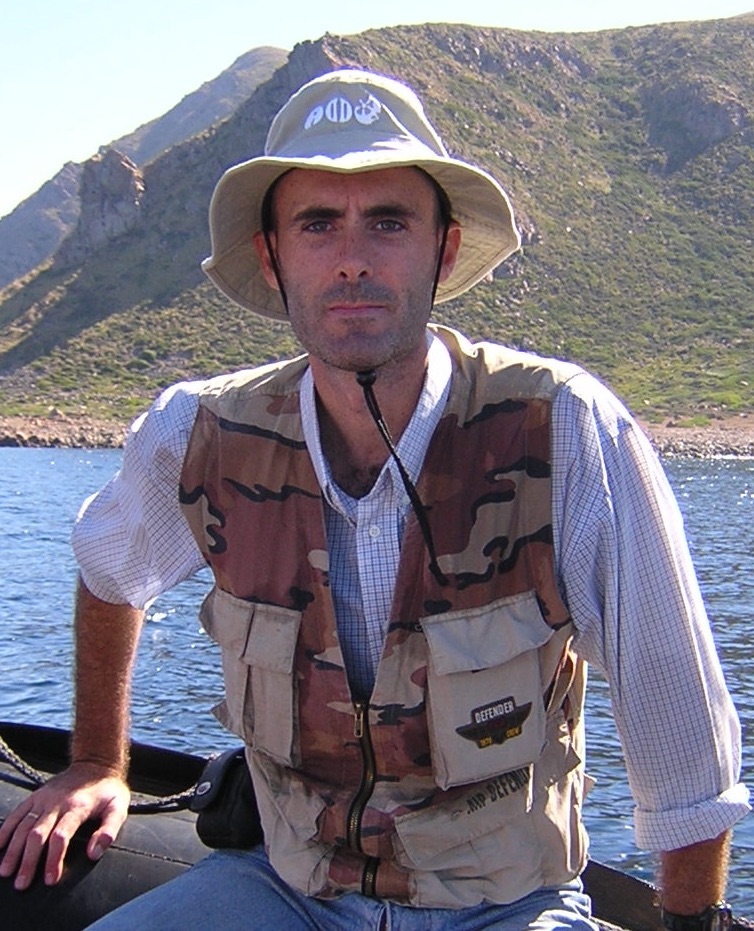
Manuel Martín Martín graduated in Geological Sciences from the University of Granada in 1990. He obtained a research grant from the FPI plan of the Ministry of Education and Science (1993-1996) and received his doctorate from the University of Granada in 1996, having studied the Tertiary of Maláguide Domain in Sierra Espuña (Bética Internal Zones). He obtained a postdoctoral fellowship from the FPI plan of the Ministry of Education and Science (1997-1998) to study the Paleogene of the Corbiéres and Minervois sector (SE, France) at the Université Paul Sabatier in Toulouse (France). He is professor at the University of Alicante from the end of 1998. Since July 25, 2002, he has been a Full Professor at the University of Alicante at the Department of Earth and Environmental Sciences (Internal Geodynamics area). Currently he is working on the tectono-sedimentary evolution of Cenozoic basins, being the Head Researcher of the Group of the University of Alicante: “Geodynamic evolution of the eastern Betic mountain range and the Alicante marine platform”.
Recent papers:
Recent Comments